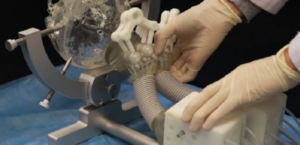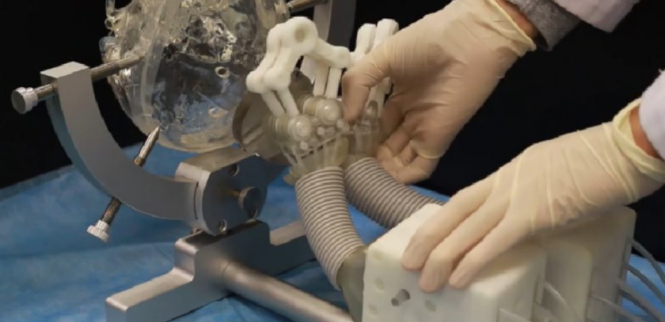MRI-Guided Neurosurgery: Current Trends and Innovations in Precision Medicine by Ligia CHIPER In MRI-guided neurosurgery, the modality of brain surgery has changed. It allows surgeons to locate a tumor or any other abnormality of the brain with precision and minor tissue destruction. From present trends, it is already established that there is a strong move toward enhanced imaging techniques combined with innovative technologies for better patient outcomes.
These advances have resulted in more appropriate diagnosis and successful surgical planning. Other techniques, such as functional MRI and intraoperative imaging, also became part of the daily routine. All these innovations made surgeries safer and allowed patients to recover faster by showing just how important MRI guidance had become to modern-day neurosurgery.
These recent developments are the key to understanding how the field is going to continue changing in the future regarding surgical practices. These latest trends are going to immensely benefit the patients and the doctors who are engaged in neurosurgery.
Key Points
- MRI-guided techniques increase accuracy in brain surgeries.
- New methods of imaging help to increase safety and reduce recovery time.
- Knowledge about innovations supports treatment options in the near future.
Evolution of MRI Guidance in Neurosurgery
MRI guidance in neurosurgery has undergone significant evolution over these years. New ideas and introduction of improved surgery made neurosurgery safer and with more accuracy, thus improving the outcomes of the patients.
Historical Perspectives
MRI technology was first developed in the 1970s. When that happened, it marked a complete revolution in the field of medical imaging. Initially, it produced only static images that could not be used intraoperatively. Neurosurgeons had to rely on CT scans with much less resolution.
It wasn’t until the 1980s that MRI started to be used in neurosurgery. Neurosurgeons began to use MRI images in planning and guiding operations. During the 1990s, newer forms of MRI, such as fMRI, became possible. In this technique, doctors can outline functions of the brain, thereby increasing the accuracy of any surgical procedures. These advances paved the way for the development of more successful neurosurgical treatments.
Recent Technological Advances
Recently, neurosurgery using MRI guidance has been developing at a fast pace. Techniques such as iMRI involve the ability to capture images in real time while surgery is going on. This helps neurosurgeons to make informed decisions on the spot and hence with greater accuracy.
Newer technologies such as DTI offer exquisite detail to map the pathways of the brain. Such information aids surgeons in avoiding critical areas of the brain, hence helping to minimize the risk of complications.
Second, robotic assistance has been taken into consideration for MRI-guided procedures in order to increase the precision of the procedures. Due to these changing face innovations, the incorporation of MRI in neurosurgery continues to evolve, resulting in better patient outcomes.
Recent Trends in MRI-Guided Neurosurgical Procedures
There have been newer techniques and technologies in order to further advance MRI-guided neurosurgery. The key recent trends include improved intraoperative imaging, benefits derived in tumor removal, and functional neurosurgery.
Applications of Intraoperative MRI
iMRI gives real-time intra-operative imaging. It provides the surgeon with an excellent overview of the patient’s anatomy intra-operatively. This view will give room for them to make more knowledgeable decisions and adjust plans according to their viewing.
Preciseness of the procedure can be achieved through the use of iMRI. Doctors shall be in a position to verify on the spot whether the tumor has been removed. If the tumor residues are found, they shall operate there and then. This reduces post-operative surgeries.
Another advantage of iMRI is that it helps in minimizing complications. With improved imaging, the surgical team will be able to find those parts of the brain that are of critical importance to the patient’s basic life functions. The minimum injury to healthy tissues is attributed to this approach.
Advantages in Tumor Resection
The use of MRI guidance enables the doctor to have a very high success rate in the resection of a tumor. The accurate imaging enables the physicians to trace the tumors exactly before and during the actual resection. Consequently, more complete removals are performed.
It enables surgeons to visualize the tumor with regard to structures that are essential in the patient, structures that, if preserved, may protect motion or speech, for instance.
Using MRI also allows for patient outcomes to improve, since research shows complications are reduced and recoveries shorter. Improvements in technology have made surgeries easier and more efficient.
Advances in Functional Neurosurgery
MRI-guided techniques are revolutionizing functional neurosurgery. These approaches are applied to conditions such as epilepsy and movement disorders. This technology allows for more precise targeting of interventions.
Surgeons can use MRI to identify areas of the brain that may be contributing to these various disorders. The precision of this accordingly heightens the potential for successful outcomes. It may also reduce side effects from surgeries.
New innovations include MRI-guided deep brain stimulation. This technique provides for more accurate placement of the electrode to enhance treatment. Current research is promising in this area, and an optimistic view foresees further enhancements in patient care.

Also Read :
